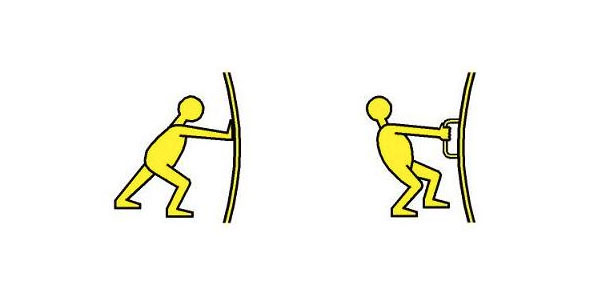The two sides to business feedback (Part 1)
Setting a good approach for your survey is an important step to getting the good results that you want! Today’s article will focus on which survey strategy to use to collect data. Namely push and pull. These two approaches are similar to marketing efforts.
Differences between survey strategies
Push refers to taking the survey directly to the customer via whatever means, ensuring the customer is aware of the survey. Whereas pull involves motivating customers to seek out your survey on their own accord.
Push survey strategy
For pushing out survey, current systems need labor to send to/call the customers and contact information needs to be collected. The result for a store will be that your ground personnel will have additional tasks. For this reason, it will increase labor cost. The benefit of doing surveys this way is that you get to send the questionnaire to almost all who pass through your customer touch point (point where customers and employee interact). Naturally not all will respond but the amount that you send to can be increasingly high depending on your effort. A disadvantage of this approach is that only people who pass through the customer touch point are eligible to give feedback (where contact is initiated or information is collected).
Pull survey strategy
For pulling customers to your survey requires almost no maintenance. However you will need to highlight the survey. Visibility is the most important factor that you need to work with. Without, your survey will not hold customer attention and the amount of data will be negligible. The second thing of importance is to understand what channel your target feels most comfortable with and naturally go with that (a QR code survey targeted towards the elder generation is… wasteful).
The drawback from this approach is that the number of responders is usually a little lower than a push survey strategy. On a positive note, answering a survey in-store on iPads is nowhere near as intrusive as a phone interview during dinner with the family.
The main benefit with this approach is that collected data is on the spot and can be used for real-time optimization in a store with little maintenance. The targeted people will also often be more diverse as the population will include the entire arena for the promotion (i.e. not limited to only those who pass through the cashier when buying but rather the entire store).
Example of different methods:
| Pull Methods for feedback: | Push methods for feedback: |
| Promotions for attracting customers to survey via different channels, such as:
– Web survey – In-store tablet (tabsurvey) – QR coded survey – ‘Suggestion box’ (support/ customer care mail addresses) |
Send out surveys to customers via different media, such as:
– text messages – Emails – Customer calls – Interviews – Mystery shopping – Focus groups |
To sum up the work differences; Push requires continuous effort to collect contact information and execute whereas pull require pre-launch efforts for promotion and planning as well as analysis.
Choosing the right survey mix:
Understanding the differences between the two strategies and their methods is part of the equation. The second part is getting the mix right for you and your organization. Next article gives you four essential questions that when answered will give you a clearer view of your best fit.
Stay tuned for next weeks’ article for part two of this blog entry.
Want to be sure that you are notified for next great article? Subscribe to our blog for newest articles!
Happy New year!
Tabsurvey
